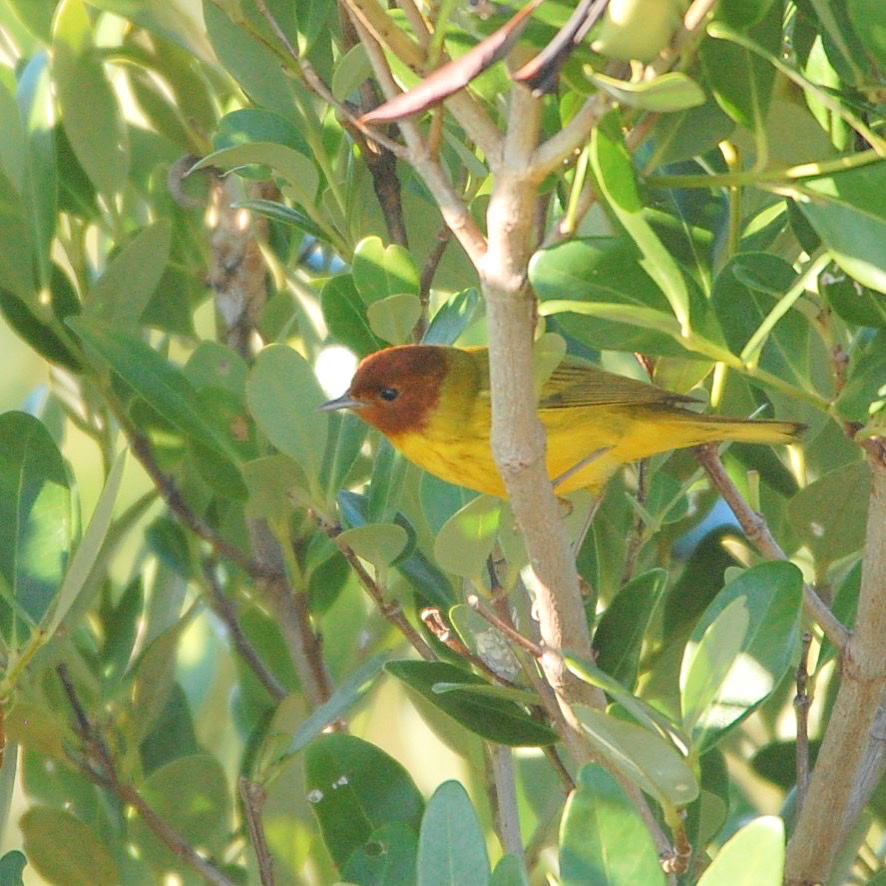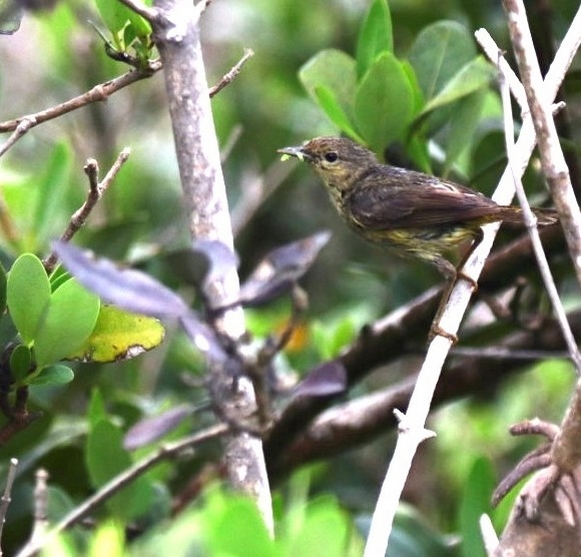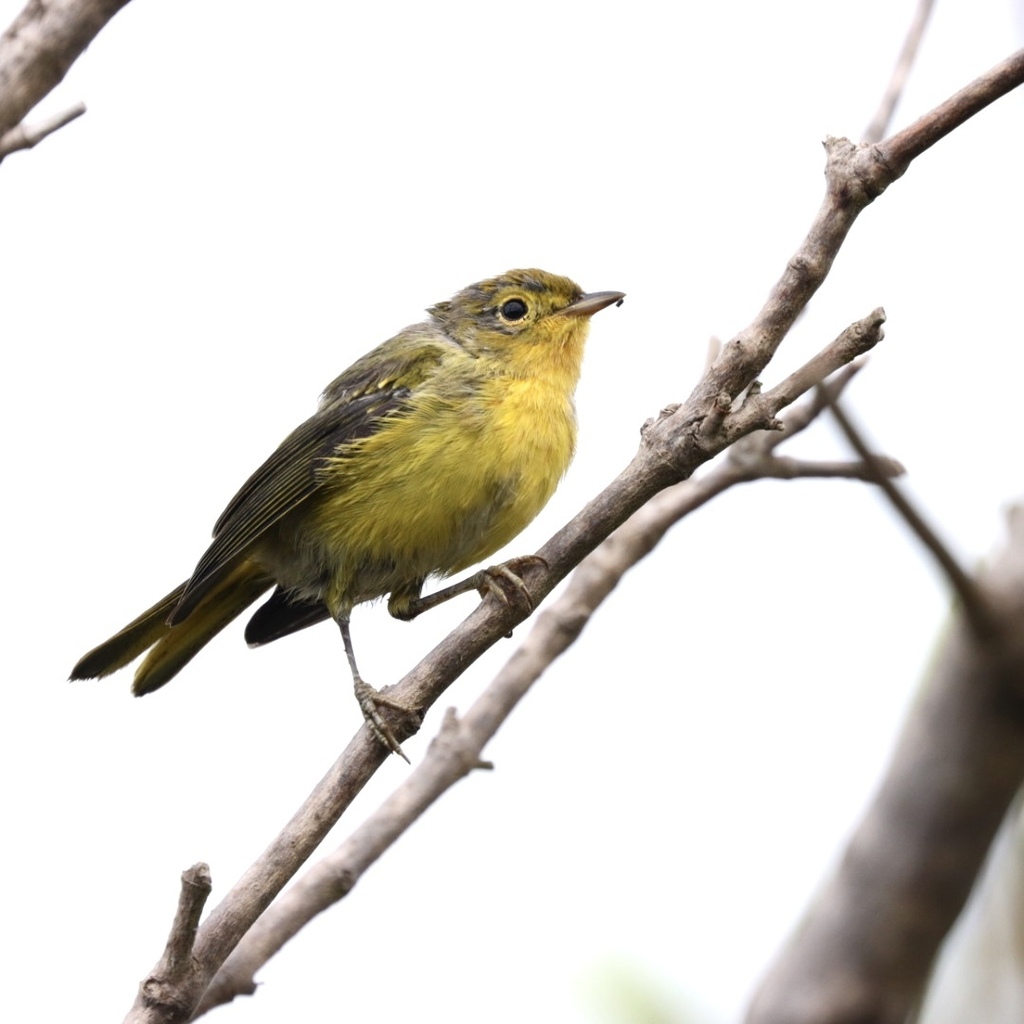by Javier Gonzalez
There is a new resident breeding species along the South Padre Island Birding Nature Center & Alligator Sanctuary’s (SPIBNS&AS) boardwalk trail, but technically, it currently stands as a subspecies, rather than a full species. “Mangrove” Yellow Warbler (Setophaga petechia sp. oraria), is a subspecies of the most common North American warbler, the Yellow Warbler (Setophaga petechia). Yellow Warblers are neotropical migrants that breed in northern woods across the northern half of the U.S. as far north as Alaska. They migrate through our area on the way to and from wintering grounds in the tropics, with some rarely wintering in the Rio Grande Valley.

Mangrove Yellow Warblers, on the other hand, are non-migratory and are special to mangrove habitats, making them strictly coastal and mainly tropical since mangroves are tropical trees. They reach the northern end of their range in the subtropical southern coastal tip of Texas, making them an RGV coastal specialty and a sought-after bird by visiting birders.
There are times of year during migration when both, “Northern” Yellows and “Mangrove” Yellows can be seen at the SPIBNC&AS for good comparison. The northern yellows seem a tad smaller, daintier, brighter yellow, where the mangrove yellows are bit more robust, are more of a yellowish green in color (especially the females), and the adult males have a full red head! Male Mangrove Warbler
Mangrove Yellows first started to be seen along the boardwalk in the fall of 2019 when an adult male spent the winter in the sanctuary where it attracted and thrilled lots of birders! Beforehand, the only way birders were able to get the best chance at seeing one was by taking a boat tour to the mangrove islands at the end of the Port Isabel boat channel just west of Long Island Village with the Dolphin Whisperer, Scarlet Colley, or by taking a trip to the mouth of the Rio Grande at the south end of Boca Chica Beach. They were first recorded in the U.S. back in the early 1990’s in the tall mangroves along the riverside at Boca Chica Beach.
In the time since, these birds have now become more common and have settled into our area following the northward expansion of the Black Mangrove’s (Avicennia nitida) range over the last few decades, which is related to a warming climate. Milder winters and longer periods between hard freezes have allowed Black Mangrove to make way up the Texas coastline.
If you talk to the locals that have lived in the area their whole lives, they’ll tell you that there were hardly any mangroves along the shores of SPI thirty years ago. I remember visiting the SPIBNC when it opened nearly fourteen years ago and the habitat along the boardwalk was mainly a grassy saltmarsh. It has now shifted to being a Black Mangrove Forest for the most part, and a big one since the mangroves here grow larger because they get freshwater from the water treatment plant that supplies the water to our constructed ponds.
Coastal biologists are concerned and a bit unsure about what consequences to coastal ecosystem functions the expansion of black mangroves could have on the Texas coastline as it creeps into saltmarshes, but they got a bit of reprieve last year. The “Big Texas Freeze” of 2021 finally pushed the mangroves back some as a good majority of them north of Port Mansfield froze. About a quarter of the mangroves at the birding center also froze, which caused me to worry about how the warblers would react. I first I thought wouldn’t see Mangrove Yellow Warblers for a while, but they survived just fine and even nested for the first time in our habitats this past summer of 2022!

In the years since their first sightings along the boardwalk in 2019, it seemed like mainly adult or immature males would come in to winter in the area, they’d be counted during Coastal Tip Christmas Bird Counts, stay through the season, then they’d start singing their hearts out in the spring (sometimes perched right on the boardwalk rails!), their distinctive song heard across the mangrove forest (similar sounding to northern Yellow Warblers), but ultimately, they’d move on. This past winter though there was a surprising increase in number, and some females were noted!
Come spring the males started singing as usual, but this time, instead of the song disappearing as the summer set in, I heard their song deep into the season, they didn’t show face as much as in the springtime, but I knew they were around. Then one overcast morning in July, I came up to a frenzied female busily foraging for caterpillars to feed its young that was following her around. A first confirmed breeding record for the SPIBNC!

This bird is fast becoming a symbol of the SPIBNC as it is currently the only birding center in the country where this subspecies can be seen, so it is sure to continue to attract visitors to the center! I’ve continued to get good views of the young juvenile bird born here in the time since. The birds along the boardwalk get quite used to people and give excellent viewing opportunities. I’m starting to get the same vibe from this new, SPIBNC bred, Mangrove Yellow Warbler!

Leave a Reply